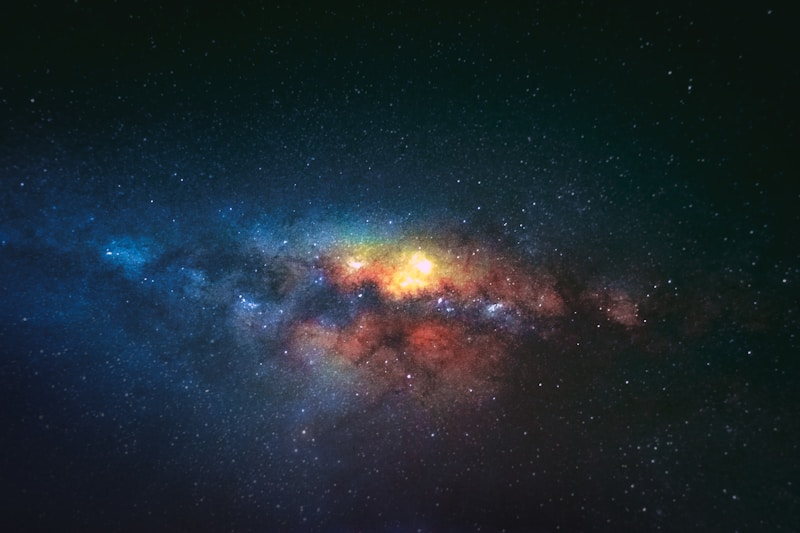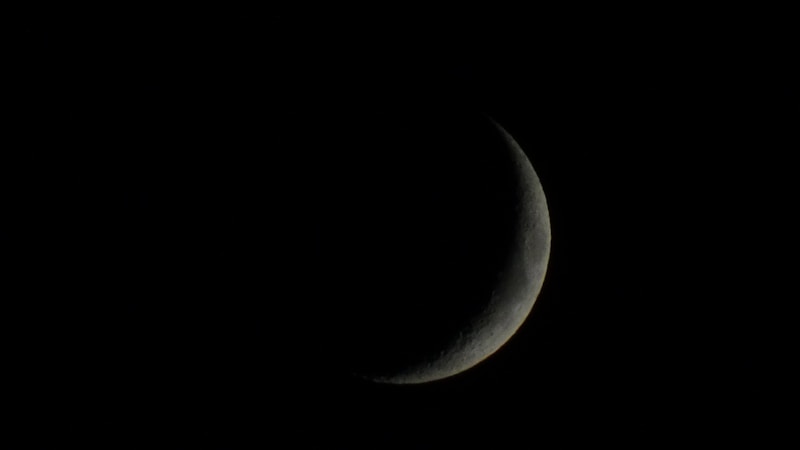9 Questions
What is the estimated percentage of cold dark matter in the universe?
23%
What is cosmic inflation?
A sudden and rapid expansion of space during the earliest moments of the universe
What is the Hubble-Lemaître law?
The farther away a galaxy is, the faster it is moving away from Earth
What is the estimated percentage of dark energy in the universe?
73%
What is the lambda-CDM model of cosmology?
A model that describes the cosmic evolution after the inflationary epoch using the frameworks of quantum mechanics and general relativity
What is the horizon problem?
Information cannot travel faster than light, setting a limit on the separation of any two regions of space that are in causal contact
What is the ultimate fate of the universe according to modern observations?
More and more of the currently visible universe will pass beyond our event horizon and out of contact with us
What is the magnetic monopole problem?
The problem of point defects in the observable universe
What is the flatness problem?
Any small departure from the critical density grows with time, and yet the universe today remains very close to flat
Study Notes
How the Universe Expands:
-
The Big Bang theory describes the universe's expansion from a high-density and high-temperature state.
-
The theory explains the evolution of the observable universe, including the abundance of light elements, cosmic microwave background radiation, and large-scale structure.
-
The universe's overall uniformity is explained by cosmic inflation, a sudden and rapid expansion of space during the earliest moments.
-
The Hubble-Lemaître law shows that the farther away a galaxy is, the faster it is moving away from Earth, supporting the Big Bang models.
-
The universe's expansion is the expansion of space, not an explosion of matter moving outward.
-
Particle horizons limit the most distant events observable in the past and limit the future events that we will be able to influence.
-
The universe began very hot and compact, expanding and cooling down.
-
The earliest phases of the universe are subject to much speculation, but models suggest a high energy density and huge temperatures and pressures.
-
Cosmic inflation occurred around 10^-37 seconds into the expansion, causing the universe to grow exponentially and become unconstrained by light speed invariance.
-
The universe's temperature decreased as it cooled, leading to the formation of baryons, such as protons and neutrons, and the formation of deuterium and helium nuclei in Big Bang nucleosynthesis.
-
The universe's structure formed over time as slightly denser regions of matter gravitationally attracted nearby matter, forming gas clouds, stars, galaxies, and other astronomical structures.
-
The best measurements suggest that cold dark matter makes up about 23% of the matter/energy in the universe, while baryonic matter makes up about 4.6%.The Big Bang Theory: A Summary
-
The baryon density of the universe is estimated at 0.023, while the cold dark matter density is about 0.11 and the neutrino density is less than 0.0062.
-
The universe is dominated by dark energy, which makes up 73% of the total energy density of the present-day universe. This energy is thought to have caused the acceleration of the universe's expansion.
-
Dark energy is modeled by a cosmological constant term in Einstein's field equations of general relativity, but its composition and mechanism are unknown.
-
The lambda-CDM model of cosmology describes the cosmic evolution after the inflationary epoch using the frameworks of quantum mechanics and general relativity.
-
The term "Big Bang" was coined by Fred Hoyle in 1949 during a BBC Radio broadcast, but it did not catch on until the 1970s. Hoyle denied that the term was meant to be pejorative.
-
The Big Bang Theory is a misnomer as it implies an explosion, but the universe was the expansion/stretching of space itself, everywhere simultaneously, causing the universe to cool down and the density to be lowered.
-
The Big Bang Theory developed from observations of the structure of the universe and from theoretical considerations.
-
Hubble's law, which states that the recessional velocity of galaxies is proportional to their distance from us, provides direct observational evidence of the validity of the Big Bang Theory.
-
Other observational evidence includes the cosmic microwave background radiation and the relative abundances of light elements produced by Big Bang nucleosynthesis.
-
Dark matter is currently the subject of most active laboratory investigations, while dark energy is an area of intense interest for scientists.
-
The universe's expansion is accelerating, which is an unexpected discovery.
-
The Big Bang Theory still has unsolved problems, including the cuspy halo problem and the dwarf galaxy problem of cold dark matter, and the inflation and baryogenesis phenomena.Summary Title: Evidence for the Big Bang Theory
-
The Big Bang theory was proposed by Georges Lemaître and Alexander Friedmann before Edwin Hubble's observations and analysis in 1929.
-
The theory requires the relation v=HD to hold at all times, where v is the recessional velocity, H is the Hubble constant, and D is the proper distance.
-
Direct observational evidence of the cosmological principle and the Copernican principle supports the theory that space is undergoing metric expansion.
-
The discovery of the cosmic microwave background radiation by Penzias and Wilson in 1964 provided substantial confirmation of the Big Bang predictions.
-
The relative abundances of light elements in the universe predicted by Big Bang models have been observed to agree with measurements, providing strong evidence for the theory.
-
Observations of the morphology and distribution of galaxies and quasars, as well as populations of stars, support the current state of the Big Bang models.
-
Pristine clouds of primordial gas have been found to have formed in the first few minutes after the Big Bang, providing further evidence for the theory.
-
The age of the universe as estimated from the Hubble expansion and the CMB is in good agreement with other estimates using the ages of the oldest stars.
-
Dark energy remains one of the great mysteries of the Big Bang, with negative pressure believed to be a property of vacuum energy.
-
Some mysteries and problems in the Big Bang model have been resolved, while others are still outstanding, such as the baryon asymmetry and the details of inflation theory.Key Problems in the Big Bang Theory
-
Dark energy remains a mystery, with various theories attempting to explain it.
-
Dark matter is believed to make up around 90% of the universe's matter, but it cannot be observed directly and has only been inferred from its gravitational influence.
-
The horizon problem arises from the fact that information cannot travel faster than light, setting a limit on the separation of any two regions of space that are in causal contact. Inflation theory offers a resolution to this problem.
-
The flatness problem arises from the fact that any small departure from the critical density grows with time, and yet the universe today remains very close to flat.
-
The Big Bang model only describes the emergence of the present universe from an ultra-dense and high-temperature initial state and does not explain how energy, time, and space were caused.
-
The ultimate fate of the universe is not known, but modern observations suggest that more and more of the currently visible universe will pass beyond our event horizon and out of contact with us.
-
The Big Bang has significant bearing on religion and philosophy, with some believing it implies a creator and others arguing that it makes the notion of a creator superfluous.
-
The magnetic monopole problem was resolved by cosmic inflation, which removes all point defects from the observable universe.
-
Alternative theories to dark matter have been proposed, which modify the laws of gravity established by Newton and Einstein, but none have been as successful as the cold dark matter proposal in explaining all extant observations.
-
Inflation theory predicts that the primordial fluctuations are nearly scale-invariant and Gaussian, which has been accurately confirmed by measurements of the CMB.
-
The assumption that the universe is mostly normal matter led to predictions that were strongly inconsistent with observations, including the fact that the universe today is far more lumpy and contains far less deuterium than can be accounted for without dark matter.
-
The cosmological redshift is not identical to the classically derived Doppler redshift, and interpreting the redshift of more distant galaxies as due to the simplest Doppler redshift treatments can cause confusion.
Take our quiz on the Big Bang Theory and explore the fascinating origins of the universe. From the high-density and high-temperature state of the early universe to the cosmic microwave background radiation, this quiz covers the evolution of the observable universe and the evidence supporting the theory. Learn about cosmic inflation, dark matter, and dark energy, and discover the unsolved problems of the Big Bang model. Test your knowledge and deepen your understanding of one of the most intriguing scientific theories of all time.
Make Your Own Quizzes and Flashcards
Convert your notes into interactive study material.



